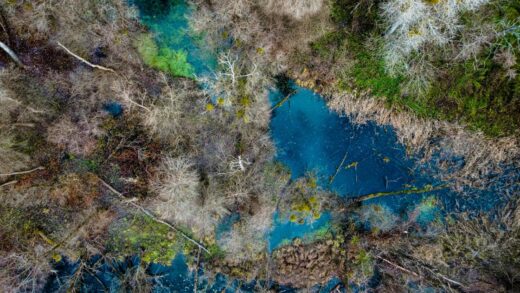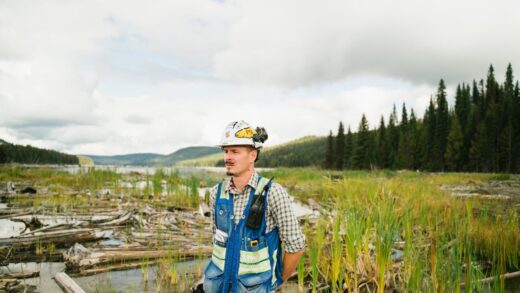In the ever-evolving landscape of environmental careers, effectively showcasing your achievements in your resume has never been more critical. Crafting a compelling resume that effectively highlights your environmental achievements is the key to making a lasting impression on potential employers. Instead of relying on a custom resume service, we’re here to equip you with the knowledge and tools to write your own standout resume. This practical guidance is your compass to navigating the intricate task of spotlighting your environmental accomplishments, ensuring that your resume not only stands out but also resonates with the values and demands of a rapidly changing world.
Identifying Your Environmental Achievements
- Exploring Your Past Engagements: Delve into your professional track record, educational background, and volunteer involvements to uncover notable environmental achievements. If you’ve worked in a corporate setting, reflect on how you contributed to waste reduction or energy conservation. In your volunteer experiences, evaluate the effects of your actions on the local community or ecosystem.
- Quantifying the Impact: Isolate achievements that can be quantified with specific figures or data. For example, showcase how you achieved a 20% reduction in water consumption during a prior role or spotlight the successful planting of 100 trees in a community reforestation project you spearheaded.
- Acknowledging Distinctive Contributions: Even seemingly modest efforts can hold significant value. Consider, for instance, if your innovative recycling initiative diverted tons of waste from landfills annually in your workplace. These unique accomplishments add depth and allure to your resume.
- Aligning with Job Demands: Tailor your identified achievements to align with the precise requirements of the position you’re pursuing. Focus on highlighting accomplishments that directly underscore your suitability for the job.
- Emphasizing Leadership and Collaboration: Prioritize instances where you demonstrated leadership skills or collaborated effectively with teams and organizations. Spotlight scenarios where your contributions led to a tangible positive impact in an environmental context.
- Recognizing Transferable Skills: In addition to domain-specific achievements, don’t overlook your transferable skills. For example, if you managed a sustainability project, showcase your proficiencies in project management, data analysis, and teamwork, which hold value across various environmental roles.
By following these steps, you can adeptly pinpoint and articulate your environmental accomplishments, transforming your resume into a potent asset in your quest for a fulfilling career within the environmental sector.
Environmental Positions
Environmental perspectives wield immense influence over the trajectory of our planet’s future. They significantly impact the formulation of policies, regulations, and actions that can either safeguard or deplete our invaluable natural resources. In this discussion, we’ll explore two prominent environmental positions – conservation and resource utilization – without a generic preamble.
To begin, conservation, ardently supported by environmental advocates, centers on the preservation of ecosystems and biodiversity. A notable illustration can be found in the Great Barrier Reef of Australia. Conservation proponents stress its role as a marine biodiversity hotspot and emphasize the critical need to curb human activities such as pollution and overfishing, which pose a threat to its well-being. They advocate for the establishment of marine protected areas, stringent fishing regulations, and the promotion of sustainable tourism practices as essential measures to safeguard this irreplaceable ecosystem.
On the contrary, there exists a perspective that advocates for the responsible exploitation of natural resources as a means of advancing human interests. The mining industry serves as a relevant case study, providing valuable minerals for a wide range of applications, from electronics to construction. Proponents argue that responsible mining practices, including land reclamation and water conservation, can help mitigate environmental damage while still meeting the demand for these essential resources.
It’s imperative to acknowledge that both positions have their respective merits and demerits. Conservation efforts safeguard delicate ecosystems but may pose constraints on economic growth. Resource utilization drives economic development but carries the inherent risk of environmental degradation. Striking a harmonious balance between these positions is critical for ensuring a sustainable future.
In conclusion, environmental perspectives possess the potential to shape the course of our planet’s future. By examining instances like the Great Barrier Reef and responsible mining, we gain valuable insights into the complexities of conservation and resource utilization, guiding us towards well-informed decisions that promote the welfare of both our species and the environment.
Formatting Tips for an Environmental Resume
Creating a standout environmental resume is paramount in today’s competitive job market. Employers in this field are in search of candidates who not only possess the right qualifications but can also communicate them effectively. To aid you in developing a compelling environmental resume, here are some formatting tips:
Contact Information
Include your full name, phone number, and a professional email address.
Summary or Objective
Compose a succinct, one-sentence summary highlighting your specific environmental expertise. For example, “Committed environmental scientist with proficiency in water quality analysis and sustainability initiatives.”
Education
Enumerate your academic accomplishments, commencing with the most recent. Mention your degree, institution, graduation date, and any pertinent honors or awards.
Relevant Coursework
Specify courses directly applicable to the job you’re pursuing, such as “Environmental Impact Assessment” or “Renewable Energy Technologies.”
Experience
Elaborate on your work history in the environmental sector. Employ bullet points to detail specific achievements. For instance, “Conducted field research to assess the impact of a wastewater treatment plant on local aquatic ecosystems, resulting in enhanced water quality standards.”
Skills
Showcase your technical and soft skills. For example, “Proficient in GIS software for spatial analysis” or “Demonstrates strong teamwork and communication abilities.”
Certifications
Highlight pertinent certifications like “Certified Environmental Professional (CEP)” or “LEED Green Associate.”
Professional Memberships
If you’re a member of environmental organizations, list them. For instance, “Sierra Club Member” or “Affiliate of the Environmental and Water Resources Institute (EWRI).”
Remember to maintain brevity and relevance in your resume, aligning it with the specific job you’re seeking. By presenting your qualifications in a well-organized and transparent manner, you enhance your prospects of securing an environmental position that resonates with your expertise and passion.
Addressing Potential Challenges

As you embark on the journey to spotlight your environmental accomplishments in your resume, it’s vital to proactively address and surmount potential challenges. Here are some key considerations:
1. Limited Space: Resumes typically entail brevity, so every word must carry weight. Concentrate on your most impactful environmental achievements and employ action-oriented language. For instance, instead of stating, “Responsible for managing a sustainability project,” opt for, “Successfully spearheaded a sustainability project, reducing energy consumption by 20%.”
2. Lack of Quantifiable Data: Tangible numbers and metrics amplify the persuasiveness of your achievements. In cases where exact figures are unavailable, provide estimations based on your best judgment. For example, “Enhanced recycling program, resulting in an approximate 30% reduction in waste sent to landfills.”
3. Career Transitions: If you’re transitioning into an environmental role from a different field, accentuate your transferable skills. Highlight how your prior experiences, such as project management or data analysis, can be readily applied to environmental work.
4. Resume Gaps: Should your employment history feature gaps, offer brief explanations. Whether you pursued further education or volunteered for an environmental cause during these intervals, it signifies your unwavering commitment to the environmental field.
5. Overcoming Rejections: Rejection is an inherent part of the job application process. Instead of being disheartened, treat it as an opportunity for growth and refinement. Tailor your resume for each application and actively seek feedback from mentors or seasoned professionals within the environmental industry.
By proactively recognizing and addressing these potential challenges, you can assemble a more persuasive resume that adeptly underscores your environmental accomplishments and optimizes your chances of securing your desired role.
The Power of Certifications and Training
Acquiring pertinent certifications and undergoing training within the environmental field can have a profound impact on your career prospects. Here’s why:
1. Specialized Knowledge: Certifications such as the “Certified Environmental Professional (CEP)” serve as a testament to your expertise in a specific area, rendering you a more attractive candidate for specialized roles. For instance, holding a CEP can attest to your proficiency in environmental management and compliance.
2. Credibility and Trust: Employers commonly bestow their trust upon individuals with recognized certifications, viewing them as paragons of quality and commitment to ethical and professional standards. A prime example is the “LEED Green Associate” certification, highly esteemed in the realm of sustainable building practices.
3. Skill Augmentation: Training programs not only furnish you with theoretical knowledge but also equip you with practical skills. This hands-on experience can set you apart in a competitive job market. As an illustration, specialized training in geographic information systems (GIS) can empower you to effectively analyze environmental data.
4. Networking Avenues: Many certification programs and training courses offer opportunities for networking with professionals in the field. Cultivating a robust professional network can unlock doors to job prospects and collaborative ventures within the environmental sector.
5. Adaptation to Industry Trends: The environmental landscape is perpetually evolving, replete with changing regulations and technologies. Pursuing ongoing education and certifications ensures you stay abreast of industry trends and best practices, thereby guaranteeing the relevance of your skill set.
Investing in certifications and training not only enriches your knowledge but also positions you as a more marketable and influential environmental professional. By securing the requisite qualifications, you not only fortify your path to success but also contribute to the beneficial impact of your work on the environment.
Reviewing and Proofreading
Thoroughly reviewing and proofreading your environmental resume is an indispensable step. Simple errors can erode your credibility. Ensure:
1. Consistency: Scrutinize your resume for uniformity in formatting, font choices, and bullet styles throughout the document.
2. Grammar and Spelling: Employ tools like Grammarly to meticulously catch grammatical errors and typos. For instance, “enviromental” should unequivocally be “environmental.”
3. Accurate Information: Validate the precision of all details, encompassing contact information and job titles, to eliminate inaccuracies.
4. Tailoring: Customize your resume for each application to underscore relevant experiences and skills, aligning with the specific job requirements.
5. Clarity: Ensure the language in your resume is lucid and concise, enabling the effective communication of your accomplishments.
A resume that has been diligently reviewed and is devoid of errors significantly augments your likelihood of making a favorable impression on prospective employers.
Conclusion:
In conclusion, crafting an impactful environmental resume is a strategic endeavor. Highlighting your achievements with precision, utilizing specific examples, and adhering to proper formatting can significantly enhance your chances of securing your desired environmental role. Remember, your resume is your first opportunity to demonstrate your expertise and commitment to the field, so make it count. Tailoring your resume to the specific job you’re applying for and paying attention to detail during the proofreading process are essential steps towards success in the competitive world of environmental careers. Your dedication to presenting your accomplishments effectively is a testament to your passion for environmental excellence.
FAQ:
Q1: What is the ideal length for my environmental resume?
A1: Your resume is ideally one to two pages in length, although if you have extensive experience, it’s acceptable to exceed two pages. The primary focus should be on ensuring that the content remains pertinent and concise.
Q2: Is it appropriate to showcase volunteer work on my resume?
A2: Absolutely! Volunteer work associated with environmental causes can be a compelling testament to your dedication and enthusiasm. Be sure to accentuate your contributions, skills acquired, and the positive impact of your volunteer experiences.
Q3: Do I need to list references on my resume?
A3: Including references on your resume is not a necessity. A simple statement such as “References available upon request” suffices. However, be prepared to provide references separately if requested as part of the hiring process.



